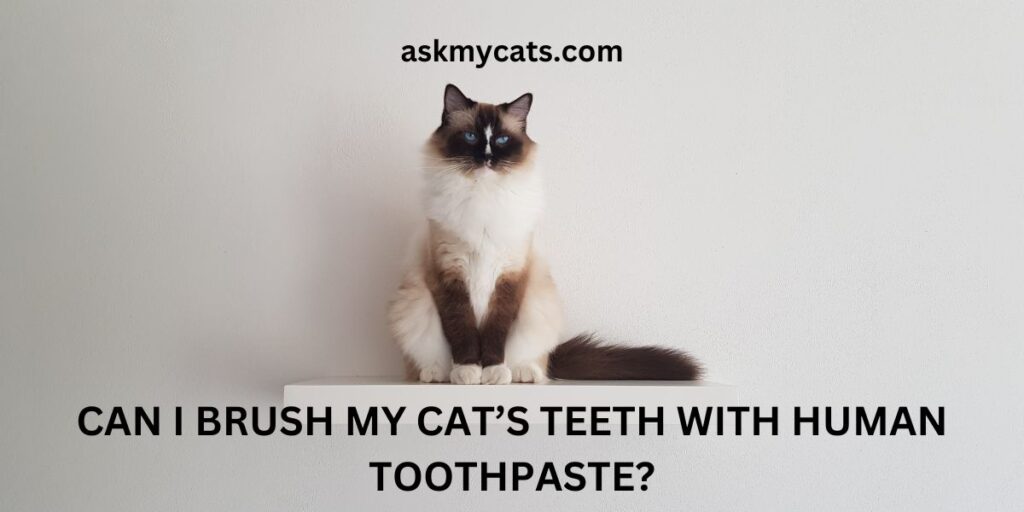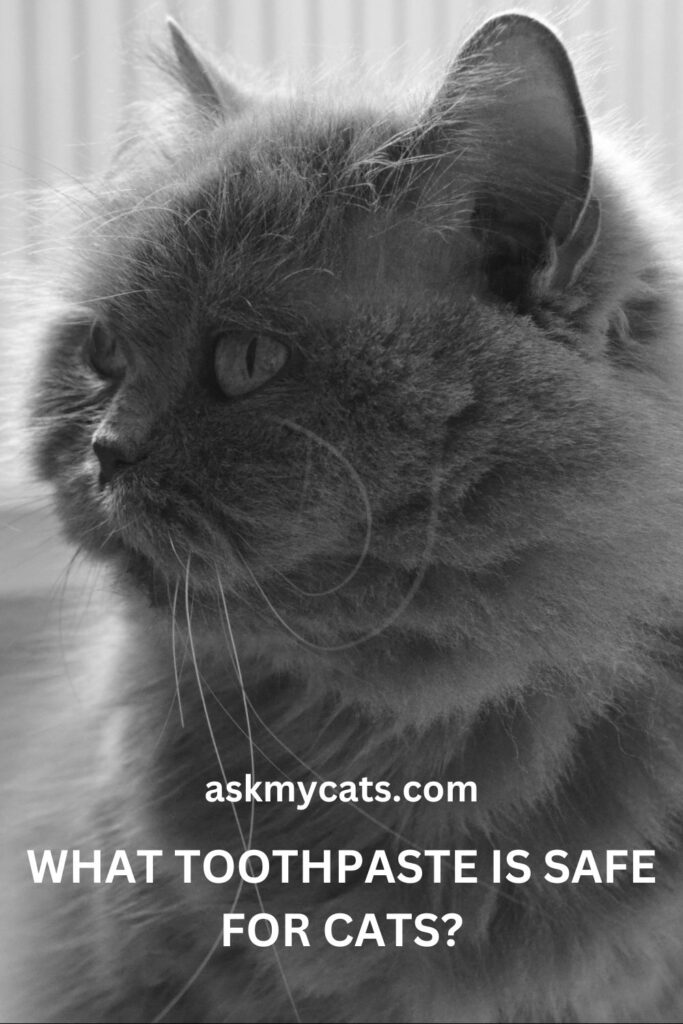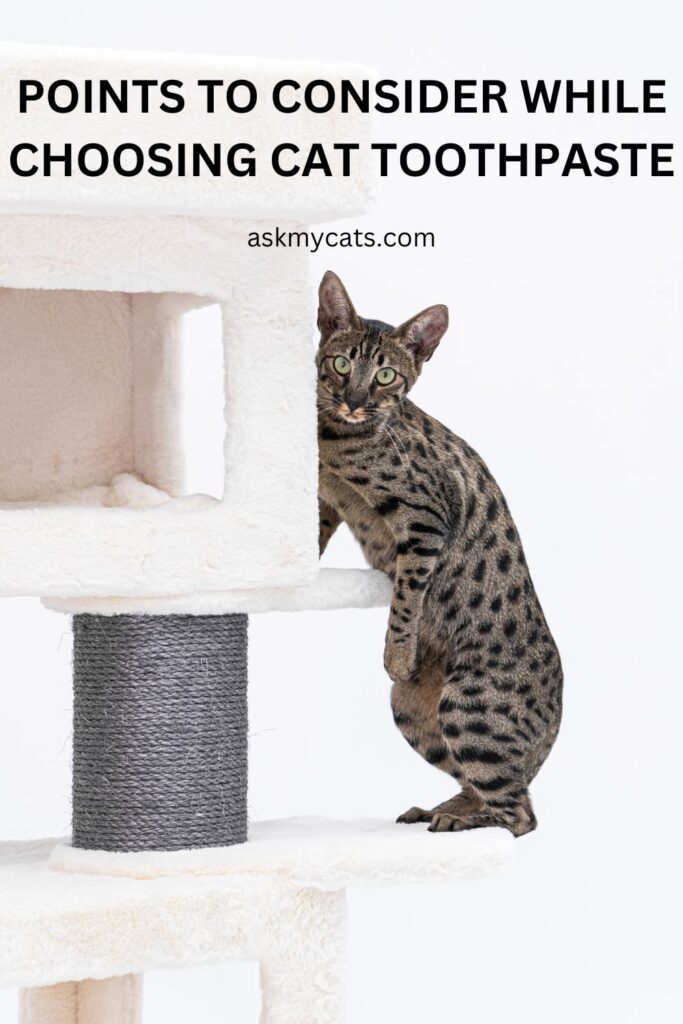In the realm of pet care, ensuring the health and well-being of our furry companions is a top priority. From regular check-ups to a balanced diet, we strive to keep our pets in the best possible condition.
But what about their dental hygiene? Cats, just like humans, can develop dental issues that require attention.
As a responsible cat owner, you might wonder if using your own toothpaste for their pearly whites is a viable option.
In this article, we delve into the intriguing question: Can you brush your cat’s teeth with human toothpaste?
Key Takeaways
- Using human toothpaste for cats can pose serious health risks due to the presence of fluoride, which is toxic to cats.
- It is crucial to use toothpaste explicitly designed for cats to maintain their dental health without compromising their overall well-being.
- Cat toothpaste is formulated with safe ingredients, free from fluoride and xylitol, and comes in appealing flavors like chicken, beef, malt, and fish.
- Cat toothpaste differs from human toothpaste in ingredients, flavor, texture, and may contain enzymes to prevent dental issues.
- Alternatives to cat toothpaste include cat-friendly tooth wipes, gauze or finger brushes, and homemade toothpaste using coconut oil and baking soda.


Give Your Cat the Perfect Day
Get the Free Ebook!
Can You Use Your Toothpaste For Your Cat?

Cats should never be given human toothpaste as it can pose serious health risks to them. The primary concern lies in the presence of fluoride in human toothpaste, which is highly toxic to cats.
While it may be tempting to allow your furry friend to indulge in the texture or the somewhat sweet taste of human toothpaste, it is crucial to resist the temptation.
Human toothpaste contains fluoride, a mineral that is beneficial for human teeth but can be detrimental to cats when ingested.
Even in small amounts, fluoride can cause adverse effects on a cat’s health, ranging from gastrointestinal distress to more severe conditions such as fluoride poisoning. To protect your feline companion from such dangers, it is imperative to keep human toothpaste out of their reach at all times.
To ensure the well-being of your cat’s dental health, it is recommended to opt for toothpaste explicitly designed for pets.
These specialized toothpaste products are formulated with the specific needs of cats in mind. They are free from harmful ingredients like fluoride and xylitol, making them safe for feline use.
Pet-friendly toothpaste comes in a variety of flavors and textures that cats find appealing. This makes the toothbrushing experience more enjoyable for both you and your cat.
By using toothpaste specially crafted for cats, you can effectively maintain their oral hygiene without compromising their overall health.
Must Read: What Happens If Your Cat Eats Or Licks Toothpaste?
Comparison of Ingredients in Human Toothpaste and Cat Toothpaste
| Ingredient | Human Toothpaste | Cat Toothpaste |
|---|---|---|
| Fluoride | Yes | No |
| Xylitol | Yes | No |
| Flavor | Mint, fruit | Fish, poultry |
| Abrasives | Yes | Minimal |
| Enzymes | No | Yes |
| Preservatives | Yes | Minimal |
| Foaming agents | Yes | Minimal |
| Swallowing Safety | Not recommended | Safe |
| Cat-specific Benefits | N/A | Tartar control |
Potential Risks of Using Human Toothpaste on Cats
| Risk | Explanation |
|---|---|
| Fluoride toxicity | Cats are sensitive to fluoride and can develop poisoning symptoms if ingested in large amounts. |
| Xylitol toxicity | Xylitol is toxic to cats and can cause a rapid release of insulin, leading to hypoglycemia. |
| Minty flavor aversion | Cats may dislike the strong minty flavor of human toothpaste, making brushing difficult. |
| Abdominal upset | Ingesting human toothpaste can cause digestive issues like vomiting and diarrhea in cats. |
| Foaming agents | The foaming agents in human toothpaste can cause discomfort or excessive salivation in cats. |
What Toothpaste Is Safe For Cats?

Cat toothpaste is specially formulated with cats in mind, offering a range of delicious flavors like chicken, beef, malt, and fish.
The best part? These kinds of toothpaste are completely free of fluoride and xylitol, ensuring the safety of your furry friend.
When it comes to taking care of your cat’s oral health, it’s important to select a toothpaste explicitly designed for them.
This ensures that you’re using a product tailored to their specific needs, preventing any potential health issues that may arise from using inappropriate toothpaste.
If you’re interested in making your own toothpaste for your cat, it’s essential to prioritize their well-being by using cat-safe ingredients.
Homemade toothpaste can be created by combining cat-friendly ingredients such as coconut oil, baking soda, and flavorful chicken or beef broth. This way, you can provide a natural and safe toothpaste option that your cat will enjoy.
Whether you opt for commercial cat toothpaste or decide to whip up your own creation, the key is to prioritize the health and safety of your beloved feline companion while ensuring their dental hygiene is taken care of.
Must Read: How to Brush a Cat’s Teeth: Step-by-Step Guide
Can I Brush My Cat’s Teeth Without Toothpaste? (Dry Brushing For Cats)
Yes, you can definitely brush your cat’s teeth without toothpaste if necessary. While using toothpaste specifically formulated for cats is ideal, there are situations where you may need to brush your teeth without it.
The mechanical action of brushing alone can still provide some benefits by removing plaque and food debris from your cat’s teeth.
Brushing your cat’s teeth without toothpaste is known as dry brushing. It involves using a toothbrush or finger brush to gently scrub their teeth and gums.
Must read: Finger Toothbrushes for Cats: A Comprehensive Guide
The primary goal is to physically remove any buildup of plaque or food particles, which can contribute to dental issues such as tartar and gum disease.
While dry brushing can help remove some plaque and debris, it’s important to note that it may not be as effective as using toothpaste.
Cat toothpaste offers additional benefits, such as enzymatic action to break down plaque and freshen breath. It also provides a more pleasant experience for your cat with its appealing flavors and textures.
Therefore, if you find yourself unable to use cat toothpaste temporarily, dry brushing can serve as a short-term solution. However, it’s recommended to obtain cat-specific toothpaste as soon as possible to ensure optimal oral health for your furry friend.
Regular toothbrushing with cat toothpaste remains the best approach for maintaining dental hygiene and preventing dental issues in the long run.
How To Dry Brush Your Cat’s Teeth?
To begin dry brushing, choose a soft-bristled toothbrush or a finger brush that is appropriate for your cat’s size. It’s important to select a brush that is comfortable for both you and your cat.
If your cat is not accustomed to having their teeth brushed, you may need to gradually introduce them to the process, making it a positive and rewarding experience for them.
When dry brushing your cat’s teeth, start by lifting their lip to expose the teeth and gums. Gently brush in a circular motion, targeting all surfaces of the teeth, including the outer, inner, and chewing surfaces.
Focus on the areas where plaque tends to accumulate, such as along the gum line. Take care to be gentle and avoid causing any discomfort to your cat.
Interesting Read: How to Keep Your Cat’s Teeth Clean Without Brushing?
How Is Cat Toothpaste Different From Human Toothpaste?
Cat toothpaste differs from human toothpaste in several ways. Here are some key differences:
- Ingredients: Cat toothpaste is formulated with ingredients that are safe and suitable for feline use. It does not contain harmful substances such as fluoride or xylitol, which are commonly found in human toothpaste and can be toxic to cats.
- Flavor and Texture: Cat toothpaste is available in flavors that appeal to cats, such as chicken, beef, malt, or fish. Additionally, the texture is designed to be more palatable for cats, making the toothbrushing experience more enjoyable.
- Enzymatic Action: Some cat toothpaste contains enzymes that help break down plaque and maintain oral health. This enzymatic action is specifically beneficial for cats and helps prevent dental issues.
Points To Consider While Choosing Cat Toothpaste

When selecting cat toothpaste, there are a few important factors to consider:
- Safety: Ensure that the toothpaste is specifically formulated for cats and does not contain any harmful ingredients like fluoride or xylitol.
- Flavor: Choose a flavor that your cat enjoys, as this will make the toothbrushing experience more pleasant for them.
- Texture: Consider the texture of the toothpaste. Some cats prefer a smooth consistency, while others may prefer a slightly grittier texture. Find the one that your cat finds comfortable.
- Veterinary Recommendations: Consult with your veterinarian for their recommendations on suitable toothpaste brands for your cat. They can provide guidance based on your cat’s specific needs and health conditions.
What Can I Use If I Don’t Have Cat Toothpaste?
If you don’t have cat toothpaste available, there are alternatives you can use in the meantime:
- Cat-Friendly Tooth Wipes: Tooth wipes designed for cats can be used to gently clean your cat’s teeth. These wipes are pre-moistened and help remove plaque and debris.
- Gauze or Finger Brush: Wrap a small piece of gauze around your finger or use a finger brush specifically designed for pets. Gently rub your cat’s teeth and gums in a circular motion to help remove plaque.
- Homemade Toothpaste: In the absence of cat toothpaste, you can create homemade toothpaste using cat-safe ingredients. Mix coconut oil with a small amount of baking soda to form a paste-like consistency. Apply a small amount to a toothbrush or finger brush and brush your cat’s teeth gently. Must Read: The Ultimate Guide to Homemade Cat Toothpaste
Frequently Asked Questions
Can I brush my cat without toothpaste?
Yes, you can brush your cat’s teeth without toothpaste, but using cat-specific toothpaste is recommended for better oral health.
How is cat toothpaste different from human toothpaste?
Cat toothpaste is formulated without harmful ingredients like fluoride or xylitol and comes in flavors that cats enjoy.
What points should I consider while choosing cat toothpaste?
Consider the safety of the toothpaste, flavors that appeal to your cat, texture preferences, and any recommendations from your veterinarian.
What can I use if I don’t have cat toothpaste?
If you don’t have cat toothpaste, you can use cat-friendly tooth wipes, gauze, or finger brush, or make homemade toothpaste using cat-safe ingredients like coconut oil and baking soda. However, obtaining cat-specific toothpaste is still recommended for long-term dental care.
Final Words
Avoid using human toothpaste as it contains ingredients like fluoride that can be toxic to cats. Cat toothpaste offers a safer alternative, free from harmful substances and available in flavors that cats enjoy.
When choosing cat toothpaste, consider factors such as safety, flavors, texture, and any recommendations from your veterinarian. Regular toothbrushing with cat toothpaste is the most effective way to maintain your cat’s oral hygiene and prevent dental issues.
If you don’t have cat toothpaste available, temporary alternatives like tooth wipes, a gauze or finger brush, or homemade toothpaste can be used. However, it’s important to acquire cat-specific toothpaste for long-term dental care.
Must Read: Do My Cats Need Different Toothbrushes?
Interesting Read: Home Remedies for Cat Tartar Removal
